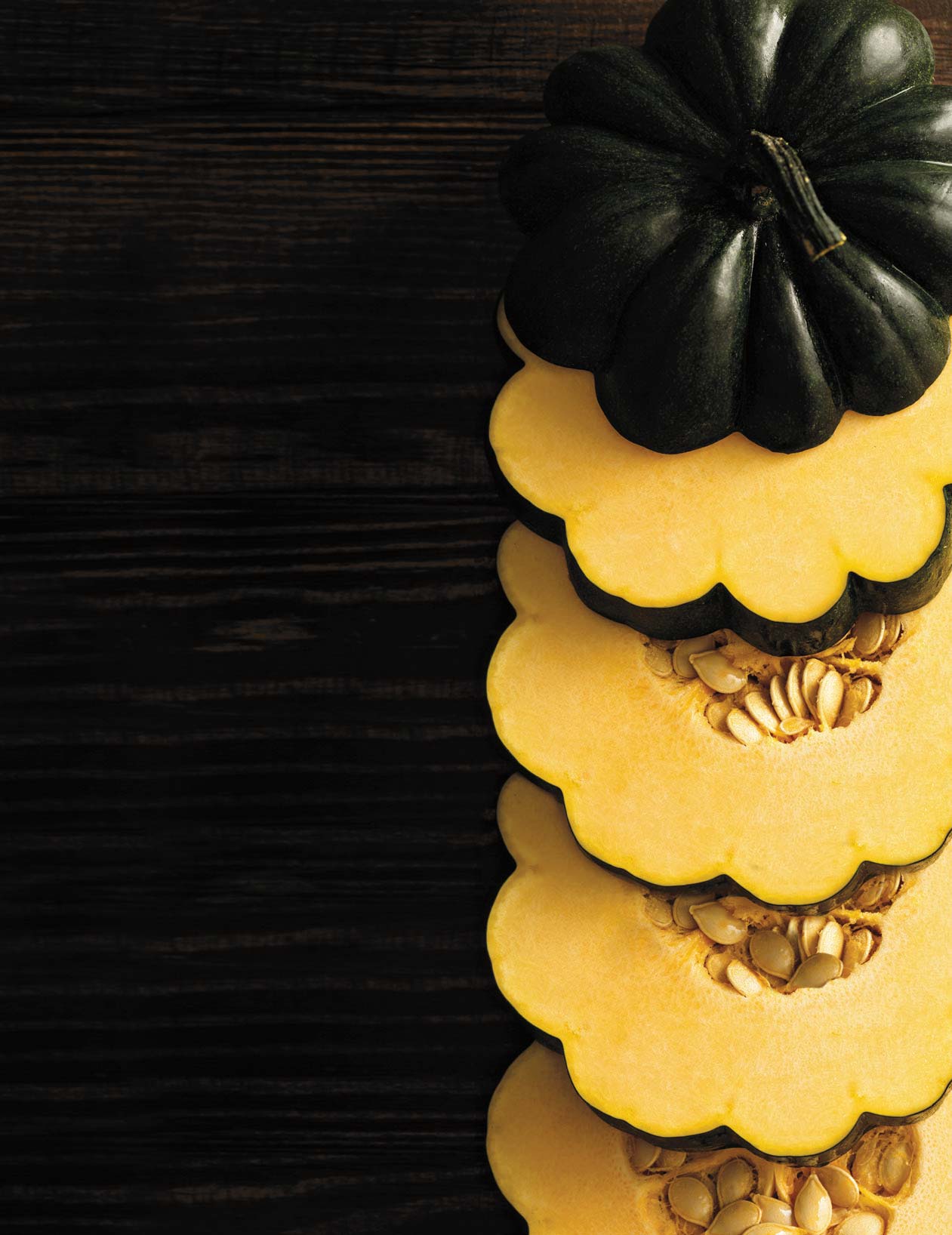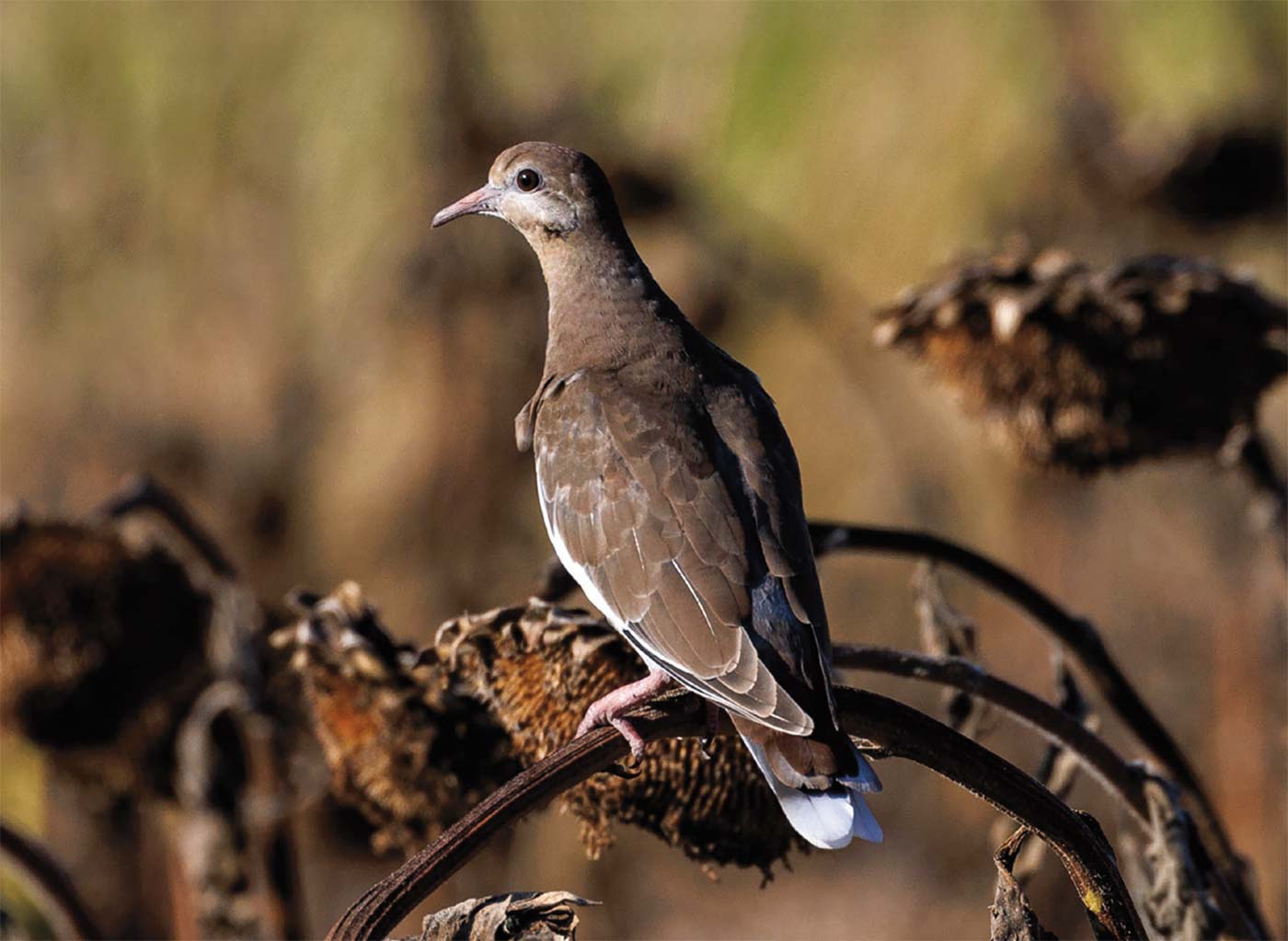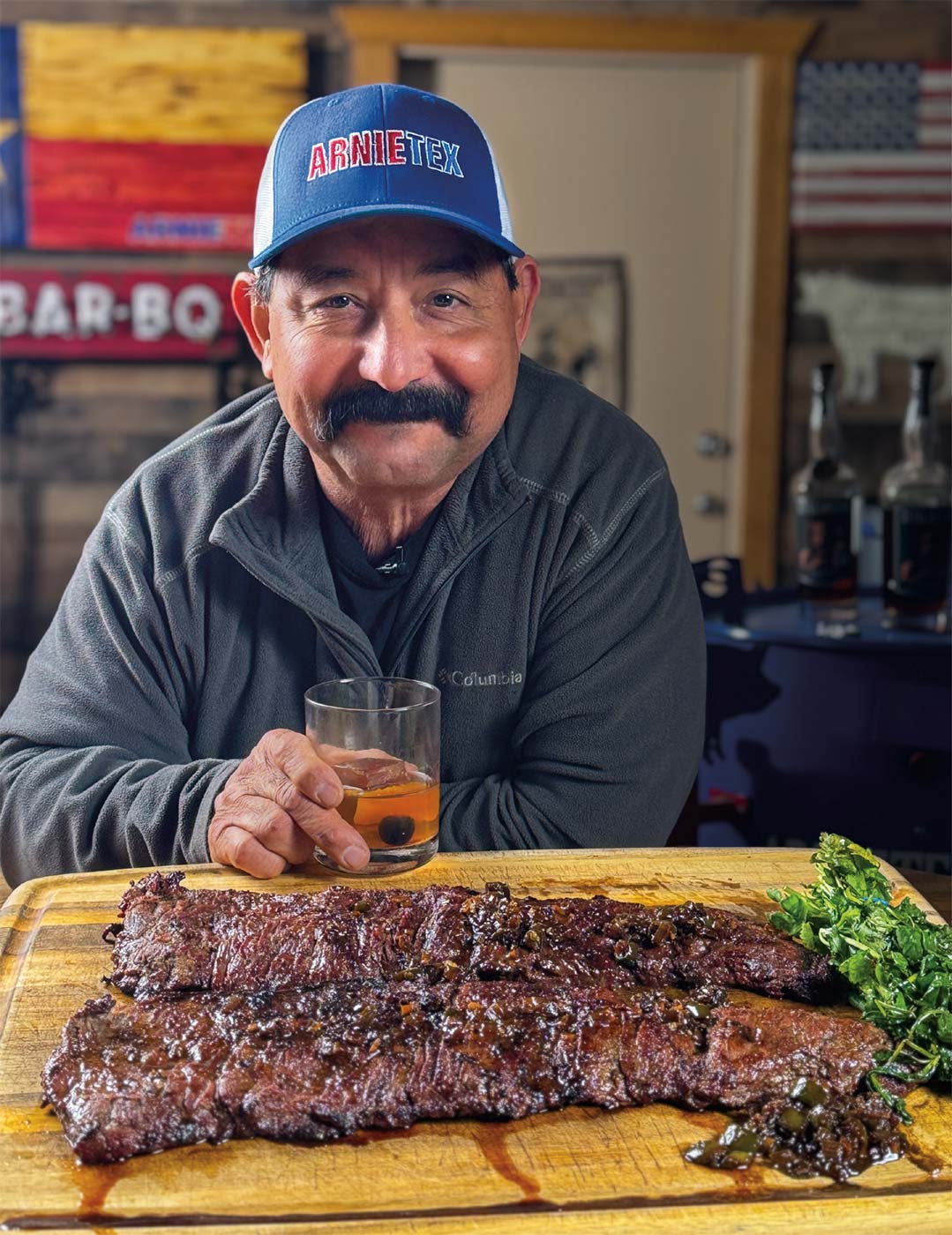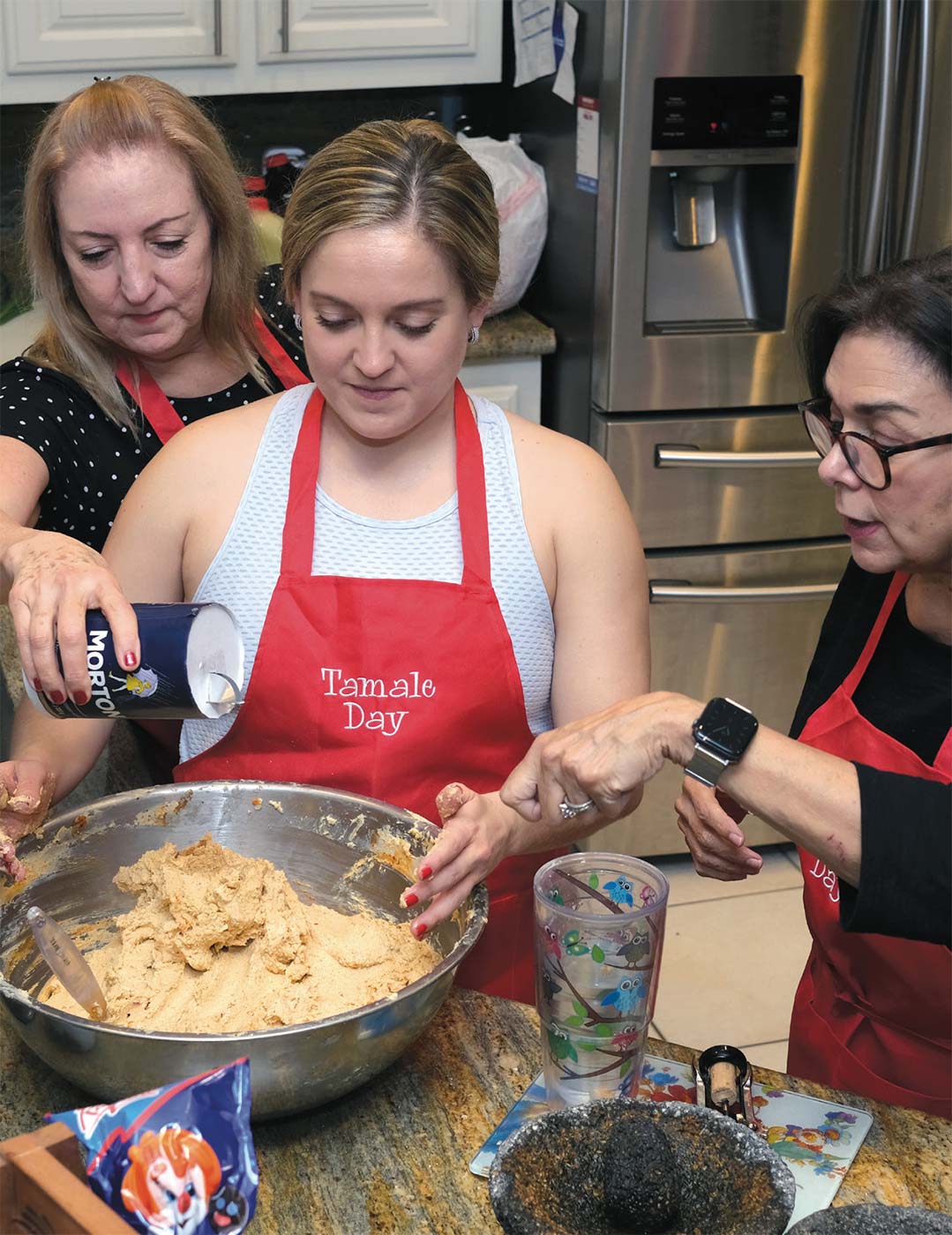
PHOTOS BY MIGUEL ROBERTS AND YVETTE VELA
When it comes to tamale consumption in the Rio Grande Valley during the holidays, a limit does not exist. Whether they’re homemade, picked up from a drive-thru, prepared by a street vendor or purchased at a local grocery store, there’s always a VIP spot reserved for tamales at the table. One thing’s for sure: They’re never canned.
Tamales are a cherished ancestral tradition, and like masa, they continue to spread and persist in our modern diets. The cornstalk provides us with the corn that gets ground and nixtamalized into masa, then beautifully placed onto its beige, ridged line-textured corn husk. The fillings, made up of dried guajillo, ancho and árbol chiles simmered in a sauce, stick to the protein of choice, tinting it a vibrant orange-red. The aroma of the nearly finished tamales is one of earthy, salty, spice-filled air, giving you a full sensory experience.
This is also the official, unofficial tamale culinary Olympics where everyone’s tia, grandma or mom is a secret ingredient. Recipes passed down from generation to generation each have particular and peculiar techniques. Filled with secret codes, superstitions and rituals, these family recipes are often guarded closely.
Some as young as 5 years old start getting recruited by the tias and abuelas to contribute to the process during the iconic tamaladas. Starting with simple tasks like soaking and drying the corn husks, they gradually learn the art of tamale making, from spreading the masa to filling the husks, creating a beautiful tamale kaleidoscope in the vaporera and then steaming the tamales. It’s more than just a labor of love and family affair; it’s a harmonious symphony of flavor production, in which each member plays a vital role in creating a divine treat.
For Cristina “Qui Qui” Tijerina and her family, it’s an event now called Tamale Day. This gathering brings together the Garza, Tijerina and Elizondo families in an all-handson- deck affair. “Dads and husbands are on call in case we need to lift something heavy or run an errand to the store for more masa or chiles,” she says. Everyone has a role in these Brownsville, Texas gatherings, making it a truly inclusive tradition passed down from generation to generation. “As a little girl, I used to clean the hojas — corn husks — the corn silks and it reminded me of playing with my Barbie’s hair,” Tijerina fondly recalls.
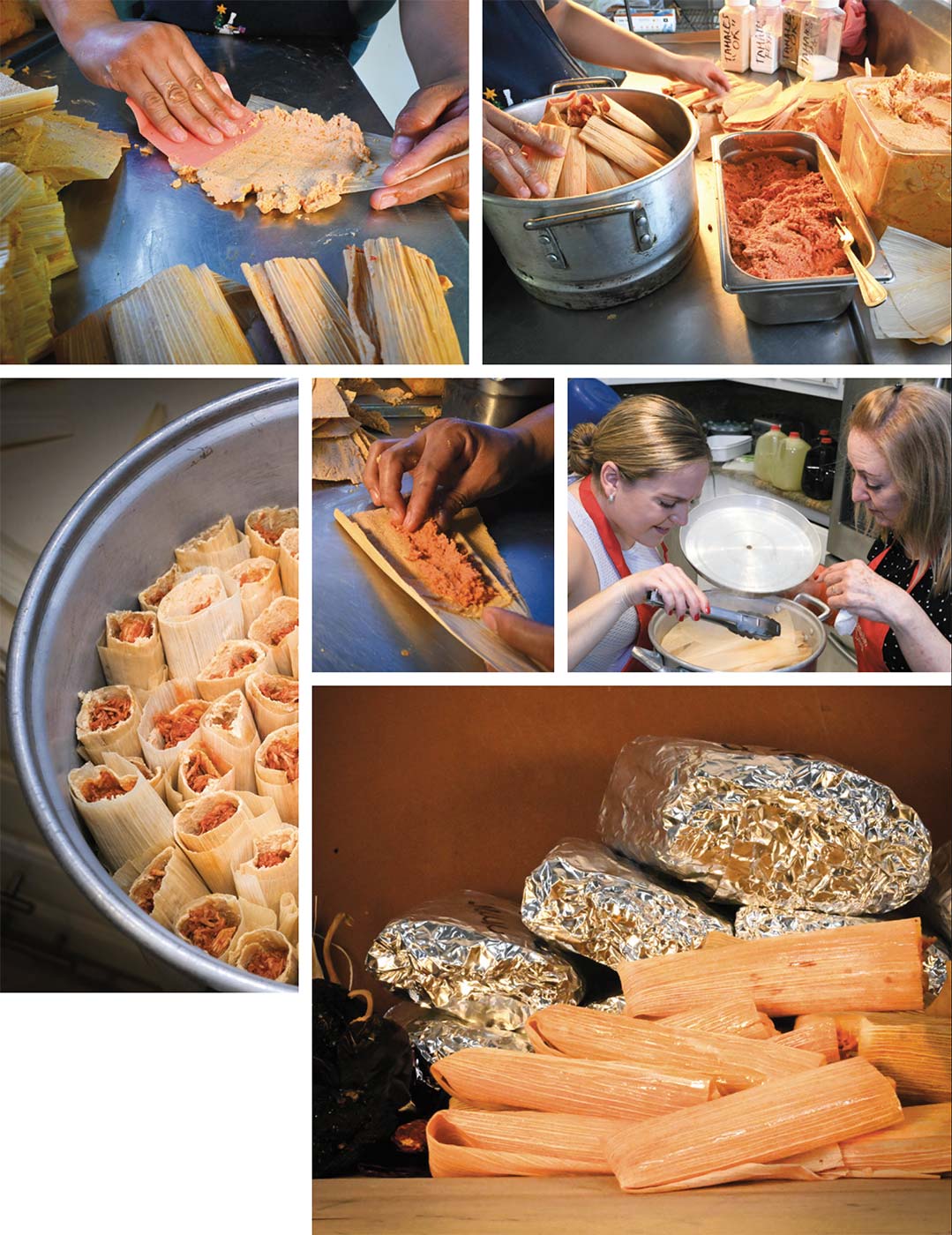
“From connecting with the land and practicing sustainability to fostering community, tamales nourish our souls in countless ways: sharing stories, recalling memories of our loved ones, settling family disputes, having hard conversations and of course, a little chisme for spice.”
Bertha Lemus from McAllen, who has been making tamales for many years since childhood, uses her trusty hand mixer to whip up her masa. Despite having a large KitchenAid, she prefers her method. “Nosotros somos una familia chica, solo hacemos 50 docenas,” she says. “We are a small family, so we only make 50 dozen.” Her family’s favorite filling is queso Chihuahua and jalapeño. Tamale filling combinations are endless and unique to each family’s taste buds. Some popular fillings are pork, chicken and cheese, jalapeño and cream cheese, and beans. There are even sweet tamales, with fillings like raisins, fresa con crema (strawberry with cream) and piña (pineapple).
This ancestral gift serves up more than just a filling bite. Tamales are a tangible representation of our antepasados’ (forefathers’) values. From connecting with the land and practicing sustainability to fostering community, tamales nourish our souls in countless ways: sharing stories, recalling memories of our loved ones, settling family disputes, having hard conversations and of course a little chisme for spice. It’s like therapy, but with a side of deliciousness! As we pass the tamale-making torch to the next generation in the other room, we’re not just sharing a recipe; we’re sharing a piece of familia history.
Tamales have been a family tradition for generations, passed down from our grandparents to our parents and now to us. But times are changing, and this beloved tradition is facing some challenges. Smaller families, the rise of ready-made tamales, health concerns and the time-consuming nature of making them have all contributed to a decline in homemade tamales.
We can tackle these challenges head on! If yours is a smaller family, just invite some friends to join the fun. Ready-made tamales? Leave those for non-holiday occasions, like the office potluck. And for those with health concerns, there are plenty of delicious vegan and vegetarian tamale recipes online. As for the time-consuming part, why not turn it into a party? Your ugly sweater party can now be an ugly sweater tamale-making party. Your next 5k can be a tamale-making marathon, with the only pacesetter being your stomach.
This season I invite you to dust off the vaporera, conjure up the ultimate tamale- making, RGV-inspired playlist, source amazing ingredients and spices, invite all your friends, roll up your sleeves and host or join a tamalada. Let’s not forget that tamales are more than just a delicious holiday treat. They’re a symbol of our heritage, a way to connect with our ancestors and a source of love, comfort and joy within our community.

